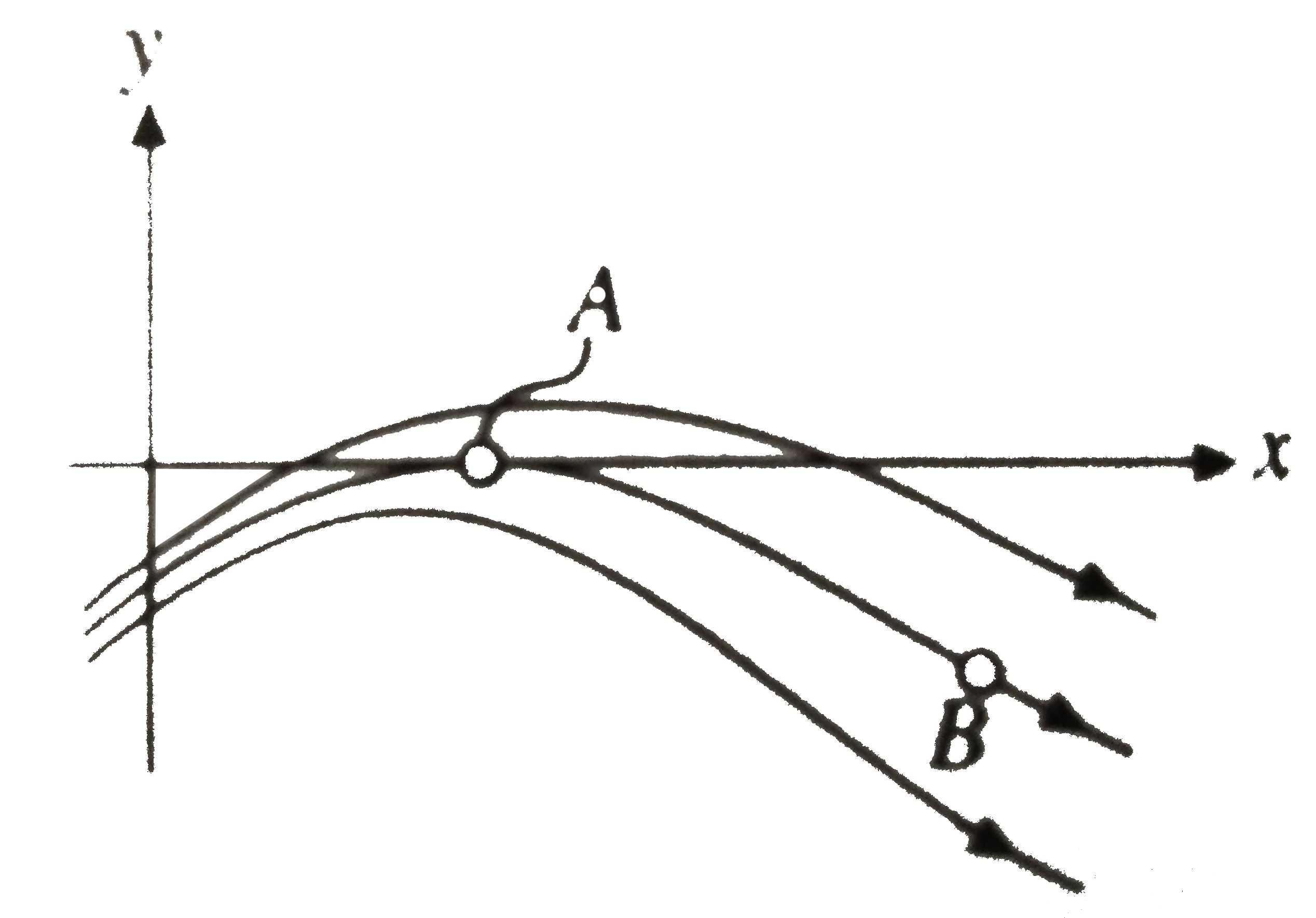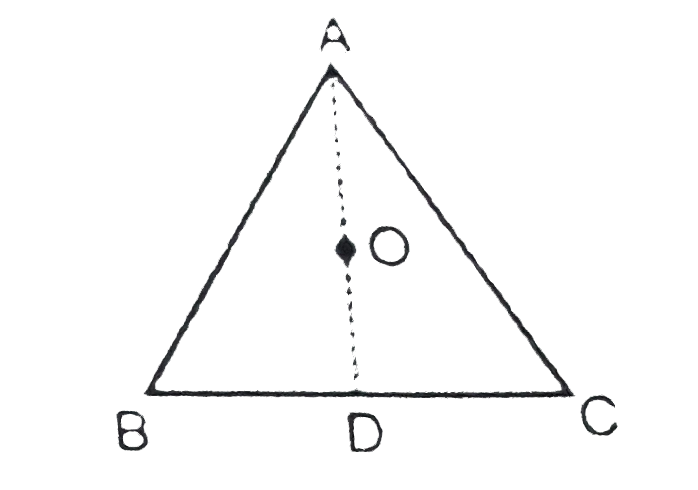Consider an arbitrary electrostatic field configuration A small test charge is placed at a null point ( i.e., where →E=0) of the configuration. Show that the equilibrium of the test charge is necessarily unstable.
Let us assume the free charge to remain in stable equilibrium. Under this condition the test charge would return to its original positive of neutral point when deflected slightly in any direction. This implies that all the field linear near the neutral point are directed towards it. This proves the existence of inward bound electric flux associated with the imaginary Gaussian surface surrounding the point. But according to Gauss' theorem the flux associated with a closed surface in the absence of any enclosed charge is zero.
Hence our assumption was not correct, i.e., the free charge should remain in unstable equilibrium.
Topper's Solved these Questions
- ELECTRIC FIELDBOOK - CHHAYA PUBLICATIONCHAPTER - ELECTRIC FIELDEXERCISE - NCERT EXEMPLAR QUESTIONS WITH ANSWER HINT
7 Videos
- ELECTRIC FIELDBOOK - CHHAYA PUBLICATIONCHAPTER - ELECTRIC FIELDEXERCISE - EXERCISE ( MULTIPLE CHOICE QUESTION )
33 Videos
- ELECTRIC FIELDBOOK - CHHAYA PUBLICATIONCHAPTER - ELECTRIC FIELDEXERCISE - HIGHER ORDER THINKING SKILL QUESTIONS
33 Videos
- ELECTRIC ENERGY AND POWERBOOK - CHHAYA PUBLICATIONCHAPTER - ELECTRIC ENERGY AND POWEREXERCISE - CBSE SCANNER
7 Videos
- ELECTRIC POTENTIAL BOOK - CHHAYA PUBLICATIONCHAPTER - ELECTRIC POTENTIAL EXERCISE - CBSE Scanner
13 Videos
Similar Questions
(a) Consider an arbitary electrostatic field configuration. A small test charge is placed at a null point (i.e, where →E=0) of the configuration. Show that the equillibrium of the test charge is necessarlly unsutable.
(b) Verify this result for the simple configuration of two charges of the same magnitude and sign placed a certain distance apart.
View SolutionConsider an arbitrary electrostatic field configuration. A small test total is placed at a null point (i.e, where →E=0 ) of the configuration. Show that the equilibrium of the test charge is necessarily unstable.
(b) Verify this result for the simple configuration of two charges of the same magnitude and sign placed a certain distance apart.
View Solution
Knowledge Check
Two positive point charges of unequal magnitude are placed at a certain distance apart. A small positive test charge is placed at null point, then
AThe test charge is in unstable equilibriumBThe test charge is in stable equilibriumCThe test charge is in neutral equilibriumDThe test charge is not in equilibriumForce →F acting on a test charge q0 in a uniform electric field →E is
A→F=q0→EB→F=→Eq0C→F=q0→ED→F=q20→EForce →F acting on a test charge q0 in a uniform electric field →E is
A→F=q0→EB→F=→Eq0C→F=q0→ED→F=q20→E
A small test charge is released at rest at a point in an electrostatic field configuration. Will it travel along the field line passing through that point ?
View SolutionFig. shows three electric field lines.
(a) What is the direction of the electrostatic force on a positive test charge placed at points A and B ?
(b) At which point A or B, will the acceleration of the test charge be greater if the charge is released?
 .
.
View SolutionFig. shows three electric field lines.
(a) What is the direction of the electrostatic force on a positive test charge placed at points A and B ?
(b) At which point A or B, will the acceleration of the test charge be greater if the charge is released?
 .
.
View SolutionTwo positive point charges of unequal magnitude are placed at a certain distance apart. A small positive test charge is placed at null point, then
View SolutionConsider an equilateral triangle ABC of side 2a in the plane of the paper as shown. The centroid of the triangle is O. Equal charges (Q) are fixed at the vertices A, B and C In what follows consider all motion and situations to be confined the plane of the paper.

(a) A test charge (q), of same sign as Q is placed on the median AD at a point at a distance δ below O. Obtain the force (→F) felt by the test charge.
(b) Assuming δ<<a discuss the motion of the test charge when it is released.
(c) Obtain the force (→FD) on this test charge if it is placed at the point D as shown in the figure.
(d) In the figure below mark the approximate locations of the equilibrium point (s) for this system. Justify your answer.
(e) Is the equilibrium at O stable or unstable if we displace the test in the direction of OP ? The line PQ is parallel to the base BC. Justify your answer.
(f) Consider a rectangle ABCD. Equal charges are fixed at the vertices A, B, C and D. O is the centroid. In the figure below mark the approximate locations of all the neutral points of the system for a test charge with same sign as the charges on the vertices. Dotted lines are drawn for the reference.
(g) How many neutral points are possible for a system in which N charges are placed at the N vertices of a regular N sided polygon ?
View Solution
